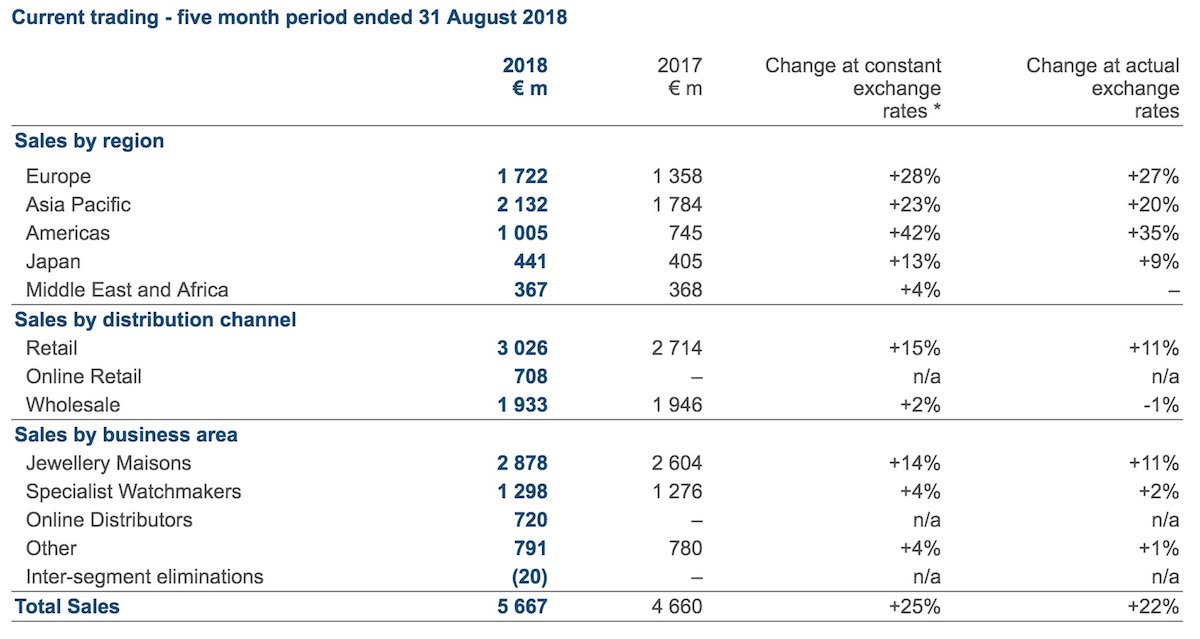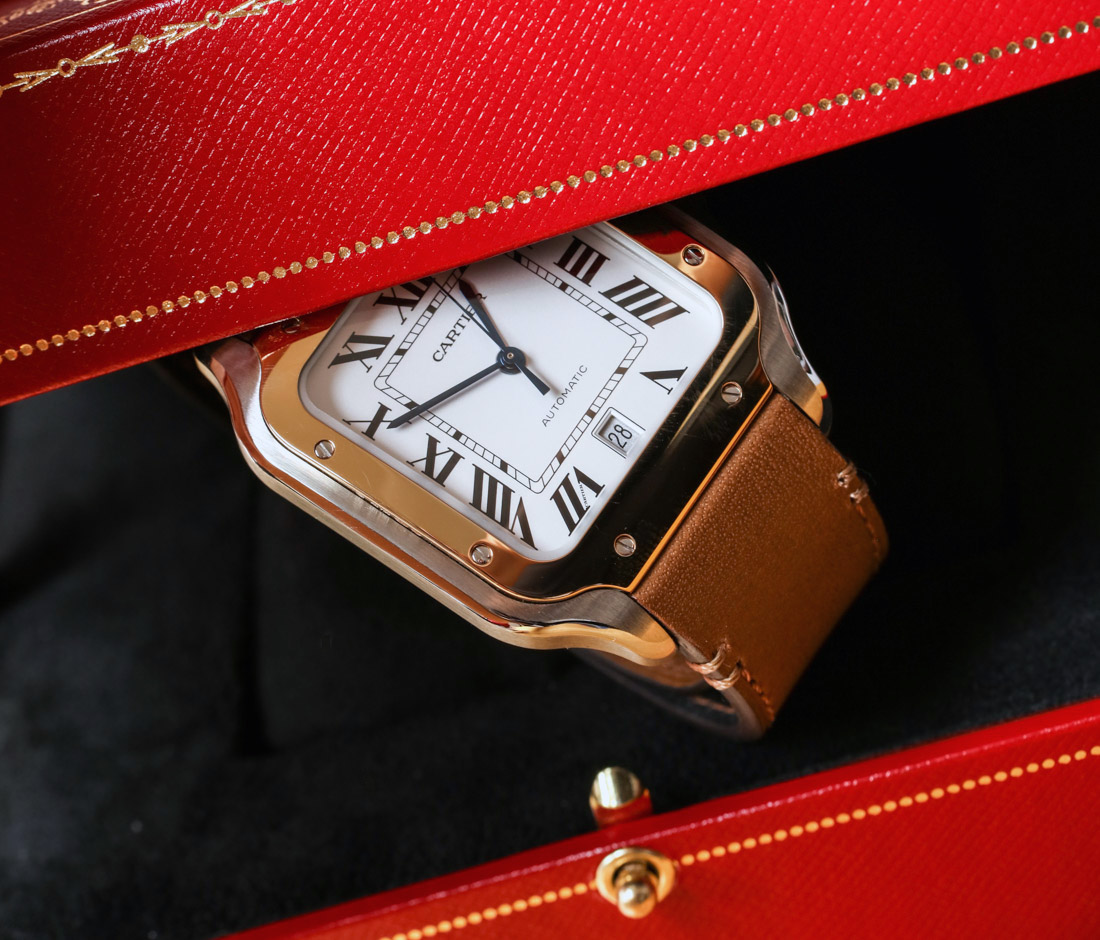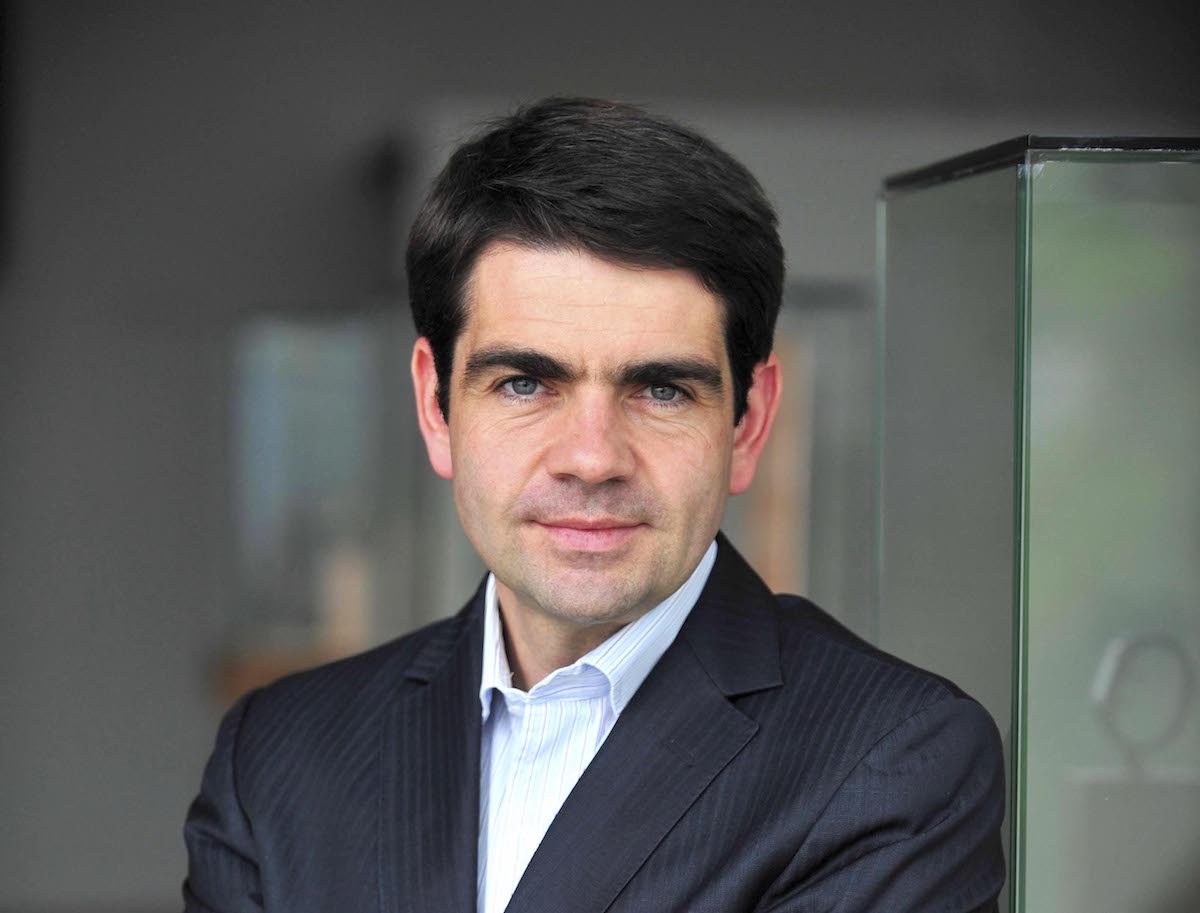
Just as I am working on a review of a pretty hot watch from Jaeger-LeCoultre from the long-gone Jérôme Lambert era, a few minutes ago I received an email from Richemont announcing the appointment of the man as Group Chief Executive Officer, with immediate effect. Let me dedicate one paragraph to Richemont Group’s 5-month results that came in today and then get on to the issue I was referring to in the title.

At the same time, Richemont Group has shared some 5-month results for the period that ended 31 August 2018. I’ll let the chart above say most of it and will just highlight the weak 4% growth for Specialist Watchmakers, the fact that most of the regional growth was generated by jewelry brands and that Richemont’s purchase of Watchfinder has a lot of potential in terms of massively increasing these results – but, because that take-over took effect somewhere within this 5-month period, its generated sales revenue was excluded from the report. Beyond these ho-hum results, there is something else that I want to talk about.
I yearn some fly-on-the-wall sort of insight into the inner workings and mechanisms of “the Group,” especially so that I could better understand the roles and responsibilities of those handful, entrusted with an important position not at one of the many brands, but at the Group level. Because in every well-ran group, brands are meant to work in harmony, each with its own dedicated path in terms of pricing, product development, brand image, advertising, target audience and so on. I for long have been wanting to create a chart of all the Richemont brands’ individual collections to illustrate how cleverly they are laid out when it comes to distinct separation in all of the aforementioned categories – it’s done almost too well, almost too carefully, at this point.
Pilot watch, costing X amount of money, supplied movement: you’re looking at brand #10. Pilot watch, costing 4X amount of money, in-house movement: you’re looking at brand #6. And so on. Based on the core identifiers, not only the brands, but even the collections, depending on their pricing, target audience and other core identifiers (in-house or supplied movements, size, vintage/modern styling, etc.) are all sorted out in a way so as to ensure the broadest spectrum of watches (and watch buyers) is covered with as little overlap as possible. At some point, however, it becomes clinical and forced – and in recent years I’ve felt that way about big launches and important turns that many of Richemont’s brands’ collections have taken. How some long-standing and powerful collections got trimmed so that they fit more neatly into the large picture, and how this practice, I felt, misfired, is for another day to discuss.

One thing to add though is how this practice of carefully laid out collections, unfortunately, creates entire blackhole brands like, I hate to say it, Baume & Mercier. A brand, that has its scarce moments to shine – but has traditionally struggled big time with finding a niche for itself that it could defend without being shut right down for fear of stepping on the toes of its much, much bigger and much better loved siblings, like, you know, Cartier for example. The moment two products, let alone two collections start to overlap, a smaller brand will not be allowed to create a product that could provide a noticeably better value proposition – or, in the rare instance that such a product did come to existence, said small brand will never be allowed to make it as sexy-looking in its appearance or have use the same sort of advertising budget to make the thing a proper home run. Want a COSC certified, in-house caliber with 5 days of power reserve for under $3k retail? Sure, said watch finally gets to exist within Richemont and it’s called the Baume & Mercier Clifton (hands-on here)… But I feel – probably won’t ever be able to prove, but I’m rather convinced that – design-wise it was forced to be as bland and as free of character as an OEM microwave oven at Tesco’s – though that’s not fair on the oven.

If we leave the poor old B&M – a brand whose struggles and, therefore, its efforts I genuinely appreciate – and look a few tiers up, all this Group-wide tip-toeing could be another factor that drives major brands like Jaeger-LeCoultre and others into their vintage-tribute-recreation nonsense, whereas the only thing they feel can’t be considered as upsetting to sibling brands is their own history, something, they can argue, they have no control over – “we are just working with what we got.” All I am trying to say is that if you give a long-term, careful look at how most all watch collections between $3k and about $25k (to include gold variants) are laid out within the Group, you’ll see that almost every single overlap one can think of has been trimmed down – including creative thinking and new, i.e. modern collections. The brands are paralyzed when it comes to developing new collections because there isn’t a popular segment (product category + price category + functionality) that hadn’t already been assigned to this or that collection… Try and do something better or newer and you’re bound to piss somebody off.
I can sympathize with the struggles of arranging the positioning of major and minor brands and collections alike… And so if there’s one thing I’d like to see Mr. Lambert do is let the Group’s brands on a looser leash and foster creativity – so that brands are allowed to and indeed encouraged to pull their heads out of their archives and get back to creating stuff that is new and is as good as it can be and pushed as much as it can be. That B&M is the epitome of a small brand being allowed 50% of the things it proposed – it was allocated the opportunity to get the technical stuff and even the price right, but it was rid from executing other selling points such as actual character, uniqueness factor and proper communication. And I think that was not because it – or someone in the Group – wouldn’t know how to get those right, but because a complete package would’ve hurt the results and egos of some more prominent brands who want to sell their far less technically advanced and far more expensive stuff… Which have been allocated the character, uniqueness factor and proper communication.
Such freedom in creativity will attract creative people, product-focused leaders and risk-taking leaders – richemont.com

